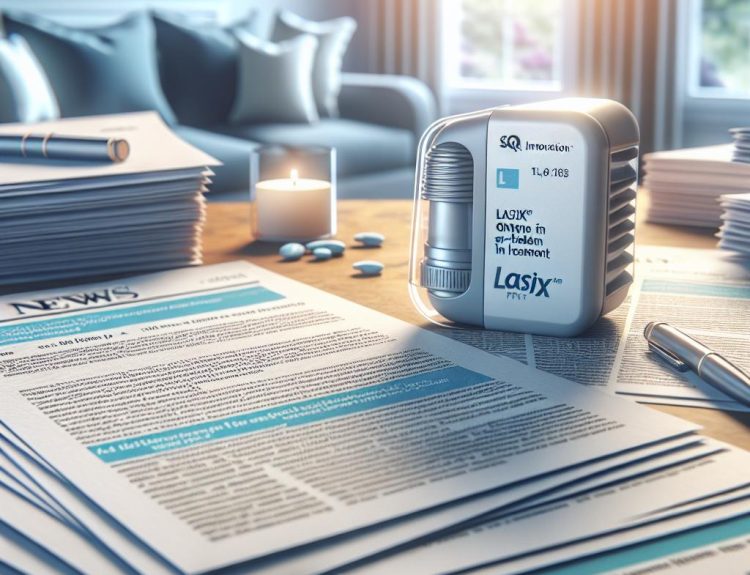Eisai has begun a rolling FDA submission for a supplemental BLA to add a weekly, at-home initiation regimen for Leqembi Iqlik, the subcutaneous autoinjector formulation of lecanemab, under Fast Track. If cleared, patients with early Alzheimer’s disease could start therapy at home using two 250 mg injections weekly, rather than initiating on bi-weekly IV infusions. This move would extend Leqembi’s subcutaneous footprint from maintenance—already approved in the U.S.—to the critical initiation phase, creating an end-to-end home-based option.
This is more than a convenience upgrade. It is a deliberate attempt to re-architect the Alzheimer’s treatment pathway away from infusion chairs and toward a decentralized, patient-managed model. Anti-amyloid uptake has been throttled by access frictions—infusion capacity, radiology scheduling, care coordination, and caregiver burden. A validated, at-home start could target the stickiest parts of that funnel. Still, it also shifts operational and economic burdens across stakeholders in ways that commercial and medical leaders must now anticipate.
For patients and care partners, weekly autoinjection could materially reduce travel, wait times, and caregiving logistics. For clinicians, the center of gravity moves from infusion suites to remote onboarding, training, and safety surveillance, with neurologists, memory clinics, and potentially primary care practices needing standardized protocols for initiation outside hospital walls. Radiology remains a choke point: baseline and early-therapy MRIs will still be required to manage ARIA risk, so the promise of “home start” succeeds only if MRI access and read quality are solved locally.
The payer calculus could be decisive. Today’s IV model primarily flows through Medicare Part B, utilizing a buy-and-bill approach, along with associated facility fees and health system economics. A self-administered autoinjector introduces a potential Part D pathway, featuring specialty pharmacy distribution, altered cost-sharing dynamics, and revised prior authorization workflows. Health systems may perceive infusion revenue as at risk and will seek alternative value capture—such as diagnostics, monitoring, and care coordination—while payers will press for evidence that subcutaneous initiation reduces the total cost of care and preserves safety in community settings. Pricing and channel strategy from Eisai and Biogen will signal whether the partnership is prepared to navigate a dual-benefit landscape without fragmenting access.
Competitive dynamics are equally fluid. With Lilly’s donanemab anchored to monthly IV dosing, a fully at-home initiation-to-maintenance journey would give Leqembi meaningful differentiation on convenience and site-of-care economics. Yet weekly injections introduce an adherence variable that IV regimens inherently control. The burden shifts to robust patient support, digital reminders, adverse event triage, and seamless MRI scheduling—areas where execution, not label, will determine share gains. Competitors evaluating subcutaneous options will be watching closely: if at-home initiation accelerates time-to-start and reduces discontinuations, the industry standard for anti-amyloid delivery could shift quickly.
Medical Affairs will have to lead the evidence and education curve. Appropriate-use recommendations must be translated to home settings, incorporating APOE genotyping guidance, MRI timing, and escalation pathways for ARIA-like symptoms without defaulting to emergency care. Real-world data from the Clarity AD open-label extension underpin the filing; post-approval, payers will expect pragmatic outcomes on adherence, ARIA detection outside infusion centers, and caregiver-reported burden. Building radiology partnerships and remote monitoring protocols will be as critical as HCP detailing.
The strategic question now is whether an at-home initiation label can unlock the latent demand constrained by infrastructure—and whether reimbursement will follow the patient from Part B chairs to Part D couches. If Eisai and Biogen can align channel strategy, MRI capacity, and patient support at scale, Leqembi could turn home-based disease modification from a pilot into the default in Alzheimer’s care. The next signal to watch: how CMS and large commercial plans choose to classify and manage the autoinjector, and whether that decision widens or narrows the access aperture in 2026.
Jon Napitupulu is Director of Media Relations at The Clinical Trial Vanguard. Jon, a computer data scientist, focuses on the latest clinical trial industry news and trends.







